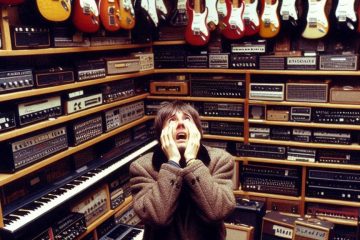The final stage of polishing your perfect mix – mastering – requires a delicate balance between power and precision. One crucial element in this equation is the loudness of your mix before it even reaches the mastering engineer. So, how loud should your mix be for mastering? Buckle up, audio adventurers, as we delve into this burning question!
Headroom, the Unsung Hero:
Imagine pushing a car to its max speed – exhilarating, but risky. In mastering, exceeding your mix’s “speed limit” through excessive loudness leads to clipping, a harsh distortion that cripples your audio’s quality. To avoid this sonic meltdown, leave headroom: aim for peak levels around -6 dBFS or lower. This gives the mastering engineer breathing room to add their magic touch without compromising clarity.
Beyond Peaks: The Power of LUFS:
While peak levels are important, a more holistic approach involves Loudness Units Full Scale (LUFS). This measurement assesses the overall perceived loudness of your mix. For mastering, target a range of -25 LUFS to -19 LUFS. This strikes a sweet spot between providing enough level for mastering and maintaining dynamics.
Genre Savvy: The Spice of Loudness:
Remember, every genre has its own loudness fingerprint. Research industry standards for your specific genre to get a ballpark figure. A hip-hop track might aim for a slightly higher average loudness than a delicate acoustic ballad.
Clarity Before Loudness: The Golden Rule:
Don’t get lost in getting your mix loud. Prioritize clarity and the right sort of dynamics in your mix. A well-balanced mix with punchy transients and space between instruments translates beautifully to mastering, even at moderate loudness.
Reference Points: Listen and Learn:
Use commercially mastered tracks in your genre as reference points. Turn down the reference track down -6dBF and compare their loudness and overall sound to your mix, adjusting yours accordingly. You don’t have to get “all the way there” with your mix when comparing but you’ll get an idea of whether you’re in the ballpark.
Communication is Key: A Smooth Handoff:
When sending your mix for mastering, clearly communicate your goals and any specific concerns you have. This helps the mastering engineer tailor their approach to your vision.
As a mastering engineer it’s my job to listen to your mix and help you fix any issues in the mix that might give less desirable results. Your mastering engineer is your partner in the creative process not just the “make it louder and punchier” person.
Leave it to the Experts: Trust the Process:
A skilled mastering engineer is your sonic ally. They possess the tools and expertise to achieve the optimal loudness for your track while preserving its unique character. Whilst you definitely need to be happy with the final masters you get you also need to trust their knowledge and the skills they’ve spent years honing.
Remember: Loudness of your mix is just one ingredient. Focus on creating a well-balanced, dynamic mix, leaving ample headroom, and let the mastering engineer get is all the way there. With these tips, your music will be ready to stand along side other amazing music with the same sonic brilliance!



0 Comments